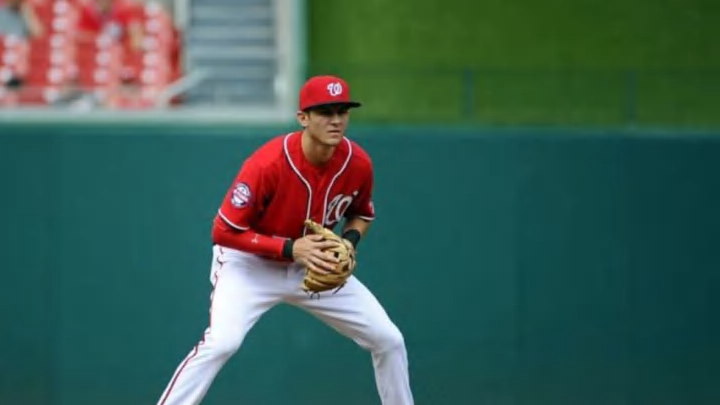Nationals, Dodgers give top prospects time to grow

The Washington Nationals and Los Angeles Dodgers have given top prospects time to develop by adding free agents to fill key holes going into 2016.
The calendar has flipped to January, and with players reporting for spring training in a little more than a month, there is added urgency to ink a key free agent or make a splash on the trade market.
As I discussed earlier this week, there are teams that could turn to minor league depth to fill holes in the outfield, and there are plenty of other examples where the same approach could be applied; pitcher Tyler Glasnow for the Pirates; shortstop Orlando Arcia for the Brewers; pitcher Jose Berrios for the Twins; and shortstop Corey Seager for the Dodgers.
However, over the past week there are also two examples of the opposite course of action: signing a veteran free agent to fill a hole, which in turn takes pressure of a younger player. One was the Nationals’ spending more than $40 million to add former Mets second baseman Daniel Murphy and former Yankees infielder Stephen Drew. The other was the Dodgers’ bargain shopping for pitching (I say bargain shopping because the money spent on multiple signings pales in comparison to what they would’ve needed to spend to re-sign Zack Greinke). Each team has a highly ranked prospect that was affected by these moves: the Nationals will be giving shortstop Trea Turner the Kris Bryant treatment while the Dodgers will likely keep Julio Urias in the minors for the entire 2016 season.
More from Call to the Pen
- Philadelphia Phillies, ready for a stretch run, bomb St. Louis Cardinals
- Philadelphia Phillies: The 4 players on the franchise’s Mount Rushmore
- Boston Red Sox fans should be upset over Mookie Betts’ comment
- Analyzing the Boston Red Sox trade for Dave Henderson and Spike Owen
- 2023 MLB postseason likely to have a strange look without Yankees, Red Sox, Cardinals
In each case the approach makes sense. Urias is just 19 years old, and even though the southpaw was dominant in 13 Double-A starts, posting a 2.77 ERA, 4.93 strikeout-to-walk-ratio and 0.995 walks and hits per inning pitched, he’s thrown just 4 1/3 innings in Triple-A. Fernando Valenzuela comparisons aside, Urias shouldn’t be needed in the Dodger rotation, especially considering the almost exclusively left-handed rotation.
That doesn’t mean Urias won’t make a major league appearance in 2016. Considering the debacle the Dodgers had behind Clayton Kershaw and Greinke—cough, cough, Mat Latos—the team needs to be prepared should tragedy strike the rotation again. If maladies plague the rotation in 2016, Urias may be called upon to pitch.
The Nationals sending Turner to the minors also makes sense, but it is a let-down after watching young players thrive in 2015 like they never have before. The Drew signing gives manager Dusty Baker a versatile bench while Danny Espinosa plays shortstop full-time. Turner is reportedly going to start the season in the minors with defensive development as the focal point of his time there. If that sounds familiar, it’s because the Cubs said the same thing to delay Bryant’s free agency by one year. The outcry that ensued after Bryant was sent to the minors won’t happen in Turner’s case because, well, he’s not the same caliber of player.
Next: Rangers, White Sox could turn to minors in OF
Turner shouldn’t be in the minors long. He’s already one of the best shortstop prospects in the game and has plenty of high quality baseball experience after his illustrious career at North Carolina State. In 821 minor league plate appearances, Turner is hitting .322 with a .384 on base percentage and has slugged .454. He’s also been successful on more than 83 percent of his stolen base attempts and has a .397 batting average on balls in play. If the Nationals begin the year struggling, Turner’s development will be accelerated.